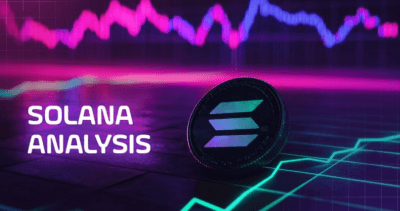Should You Trust Solana? Network Outages and Risks Explained
Understanding Solana: An Overview
Solana is a high-performance blockchain platform designed to support decentralized applications and crypto projects, setting itself apart through its advanced technological framework. One of the key attributes of Solana is its exceptional scalability, which allows it to process thousands of transactions per second without compromising on security. This significant throughput is made possible by its unique consensus mechanism, known as Proof of History (PoH). Unlike traditional consensus algorithms that require extensive validation processes, PoH timestamps transactions efficiently, effectively enhancing overall network speed and consistency.
The introduction of PoH means that transactions can be verified rapidly, which is crucial for applications that demand quick execution. The integration of this mechanism not only contributes to Solana’s reputation for efficiency but also mitigates some of the risks associated with traditional blockchain scalability limitations. As a result, developers and businesses can rely on Solana for building applications that require high transaction volumes, such as decentralized finance (DeFi) protocols and non-fungible tokens (NFTs).
Additionally, Solana offers low transaction fees, which further enhances its appeal compared to other blockchain networks. Users can perform transactions at a fraction of the cost typically associated with platforms like Ethereum. This accessibility invites more participants into the ecosystem, potentially leading to widespread adoption and innovation. However, despite these advantages, prospective users should engage in a thorough solana risk analysis. The blockchain has faced challenges including occasional outages, raising questions about its reliability. Understanding whether “is Solana safe” should involve examining both its technological strengths and its vulnerability to lapses in service.
Ultimately, Solana’s rapid growth and unique features reflect its potential in the ever-evolving landscape of cryptocurrency. By prioritizing scalability, low costs, and high throughput, Solana positions itself as a strong contender among leading blockchain solutions. Yet, as with any technology, it is essential to stay informed and vigilant regarding the challenges that may impact its long-term reliability.
The Impact of Network Outages
Solana, a high-performance blockchain platform, has experienced several notable network outages since its inception. These outages have raised significant concerns regarding solana reliability and have implications for the platform’s user trust and overall adoption. A key outage occurred in September 2021, lasting approximately 17 hours. This event was primarily linked to excessive transaction volumes that overwhelmed the network, revealing potential challenges in blockchain scalability. Such incidents prompt users and developers to conduct a comprehensive solana risk analysis to understand their operational impacts.
Another significant disruption transpired in May 2022, where the network suffered from intermittent outages. These were attributed to several factors, including software updates that did not sync effectively with node validators. The duration and frequency of these disruptions have led to skepticism around whether Solana is safe for long-term investments. Users have expressed concerns about the stability of the network, seeing these outages as a potential risk to their funds and activities within the ecosystem.
When assessing the ramifications, it is essential to consider how each outage influences user experiences and developer perspectives. Developers rely on a robust infrastructure to build decentralized applications, and repeated outages can deter them from deploying on the Solana blockchain. The perception within the crypto community about Solana’s reliability is crucial. As users and investors evaluate the risk of reliance on such a network, they may seek alternatives that promise greater consistency and security. Moreover, market performance can also be severely impacted, as investors weigh the risks associated with ongoing vulnerabilities and outages.
Ultimately, understanding the precise effects of network outages on Solana is vital for evaluating its future trajectory and its capability to establish itself as a mainstay in the cryptocurrency landscape.
Assessing the Risks of Investing in Solana
Investing in Solana, like any cryptocurrency, involves a series of risks that potential investors should carefully consider. One of the primary concerns is the technical vulnerabilities that can arise within any blockchain network. Despite its reputation for high throughput and lower transaction costs, users have experienced several Solana outage incidents that have raised questions about the network’s reliability. These outages can lead to transaction delays and downtimes, eroding user confidence and, by extension, the value of assets held within the Solana ecosystem.
Another critical factor to consider is market volatility. The cryptocurrency market is known for its dramatic price fluctuations, and Solana is no exception. Prices can swing wildly in response to market sentiment, regulatory news, or even technological developments. This volatility introduces an element of risk, particularly for investors who may be unprepared for sudden drops in asset value. Engaging in Solana risk analysis can provide a deeper understanding of price trends and fluctuations, yet it remains an unpredictable market.
Additionally, regulatory factors present another layer of concern. As governments around the world grapple with how to classify and regulate cryptocurrencies, Solana and other blockchain platforms may face legal challenges that could impact their operation. Regulatory decisions can affect investment sentiment and lead to further market instability, making it essential for prospective investors to stay informed about legal developments.
Finally, the issue of blockchain scalability persists as a challenge for many cryptocurrencies, including Solana. While Solana aims to offer a scalable solution relative to its contemporaries, any limitations in this area could prove detrimental, especially as the user base expands. Understanding these risks is pivotal for anyone contemplating investment in Solana. Comprehensive research will empower potential investors to make informed decisions regarding their involvement with this blockchain network.
The Future of Solana: Can Trust Be Restored?
As the blockchain industry continues to evolve, the future of Solana hinges on its ability to restore trust among its users. Despite experiencing a series of significant outages, which have raised concerns regarding solana reliability, the platform has been proactive in addressing these challenges. Developers have initiated several measures to enhance network stability and reduce the risk of future disruptions. For instance, improvements in decentralization protocols and the implementation of more robust validation mechanisms aim to bolster overall security.
Community sentiment plays a crucial role in determining whether trust in Solana can be reinstated. Feedback from users suggests a mix of skepticism and hope; many remain wary due to the past outages, questioning is Solana safe for critical applications. Nevertheless, a significant portion of the community recognizes the platform’s potential, particularly in regards to its speed and scalability attributes. Users are beginning to see the positive changes the development team is orchestrating, such as transparency in communication about risk analysis and system performance updates.
Experts within the blockchain sphere also weigh in on Solana’s future. Many believe that continued efforts to fortify the network will play a pivotal role in its long-term sustainability. Predictions vary; some anticipate that if Solana can successfully implement these improvements while maintaining its current growth trajectory, it will solidify its position as a leading blockchain provider. However, they caution that the road ahead involves not only overcoming technical challenges but also rebuilding user trust, which is essential for attracting new investments and partnerships. The path to enhancing blockchain scalability while managing risks will require dedication and innovation from the Solana team.
In conclusion, the future of Solana remains uncertain, yet promising, as the development team strives to address existing concerns regarding outages and network reliability. The restoration of trust hinges on their successes in creating a more secure and dependable platform, thus ensuring users that their investments and applications are well-protected.





Post Comment